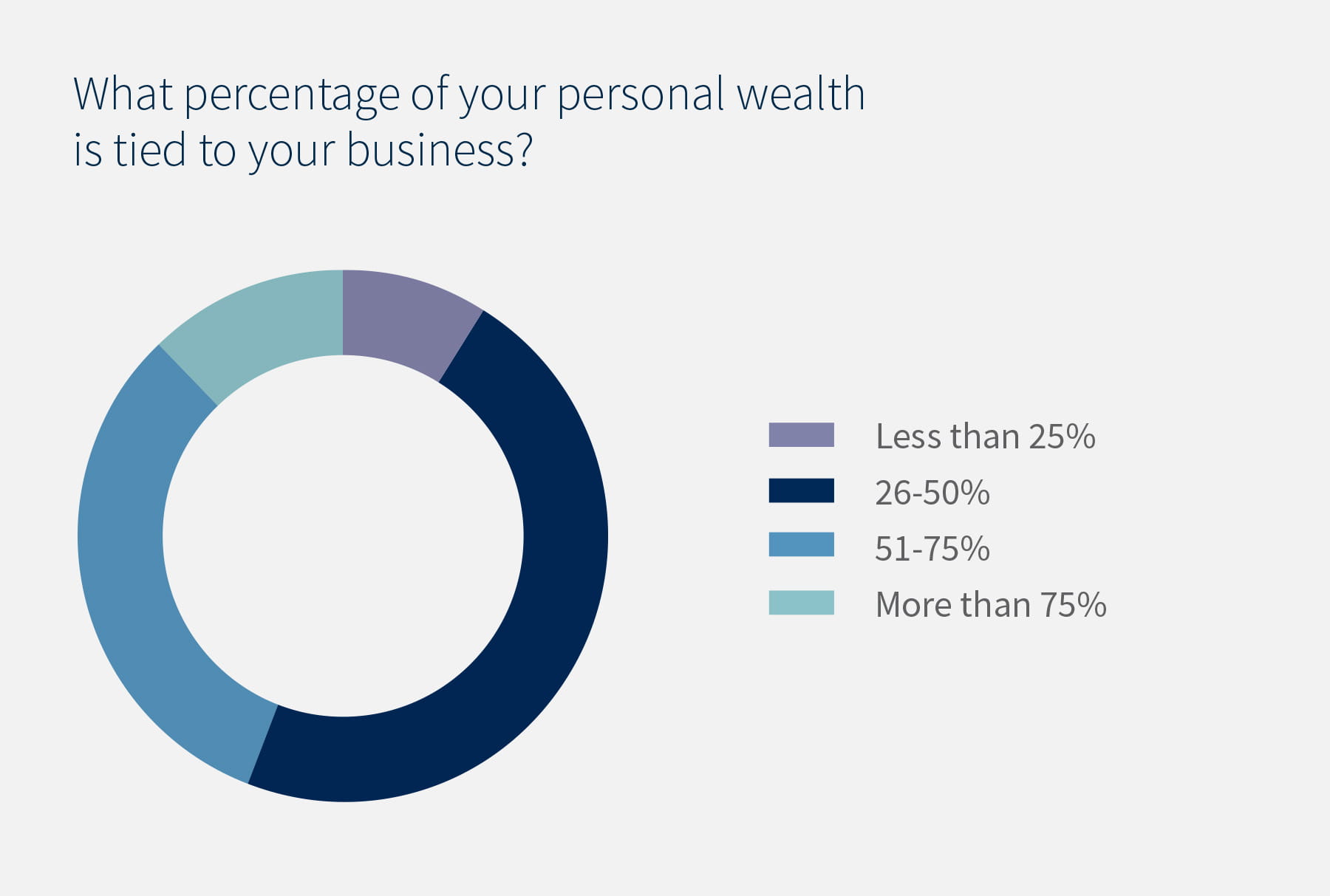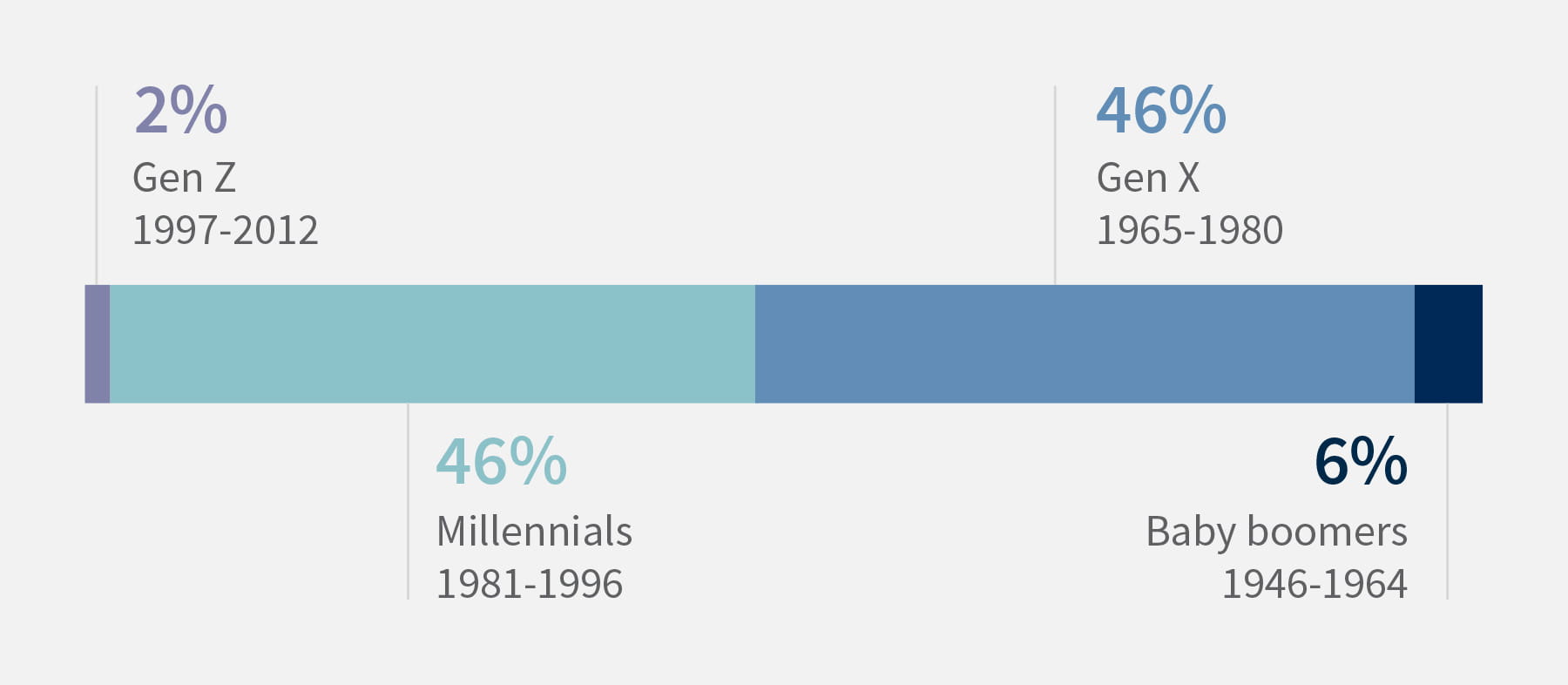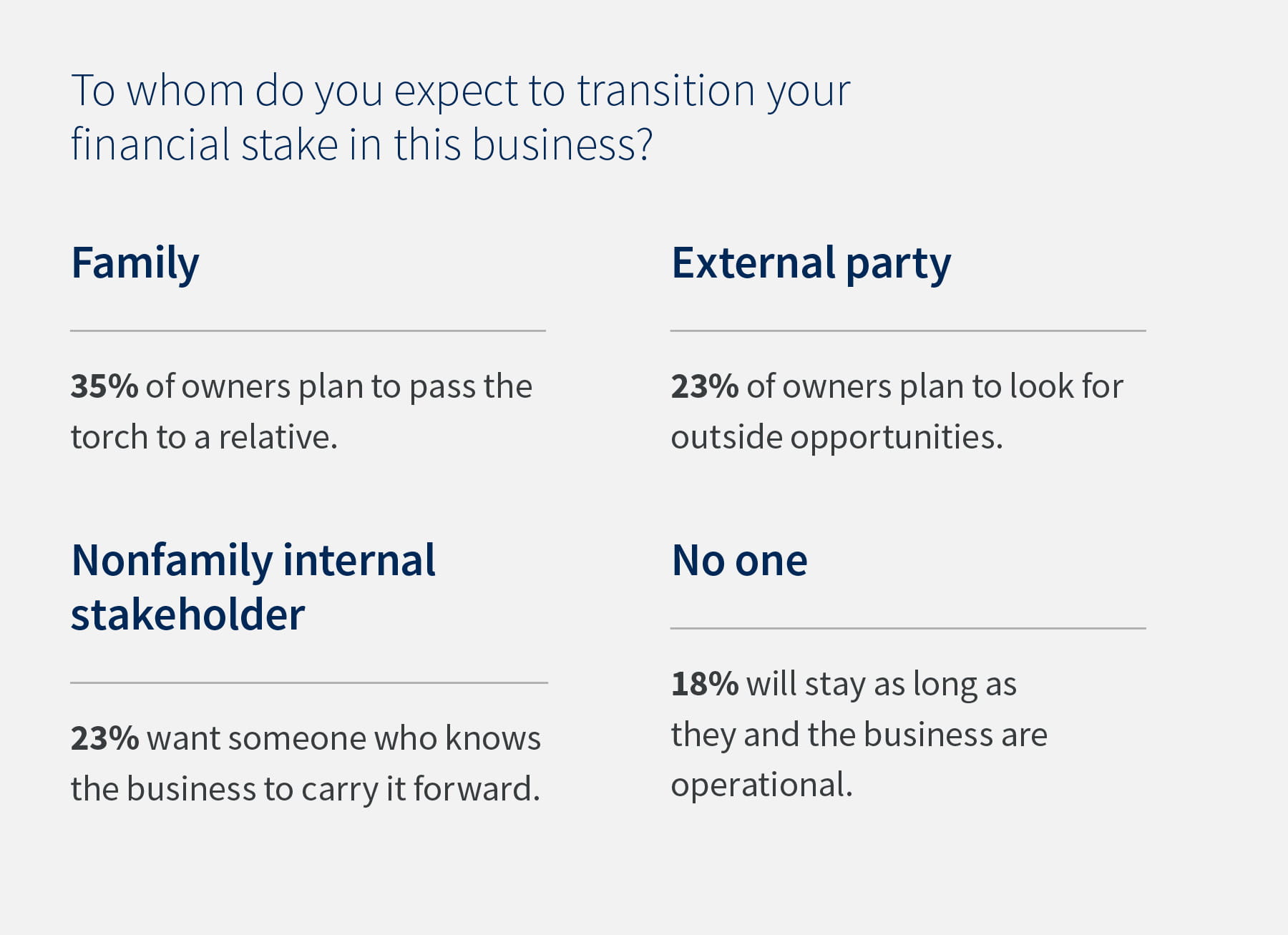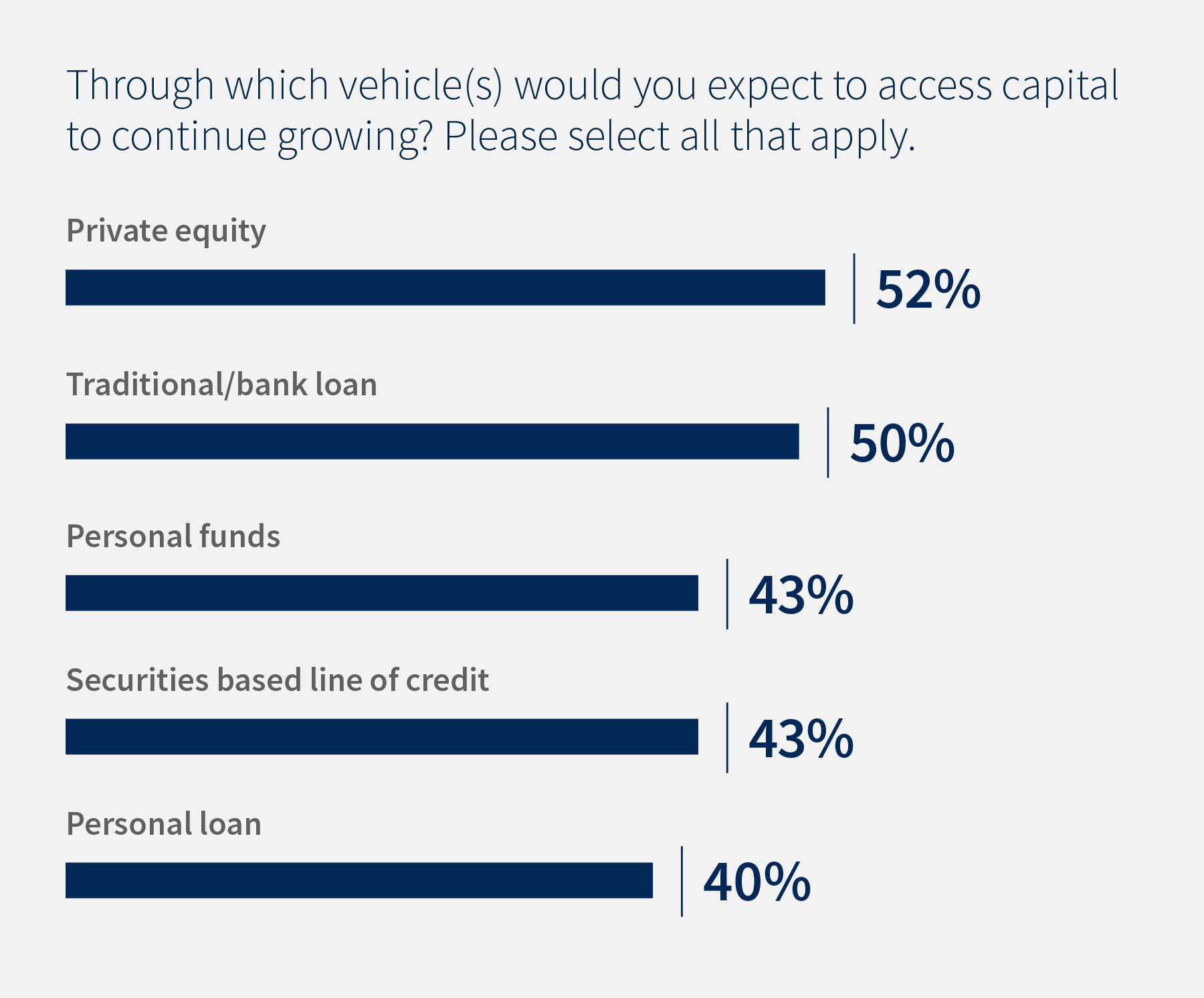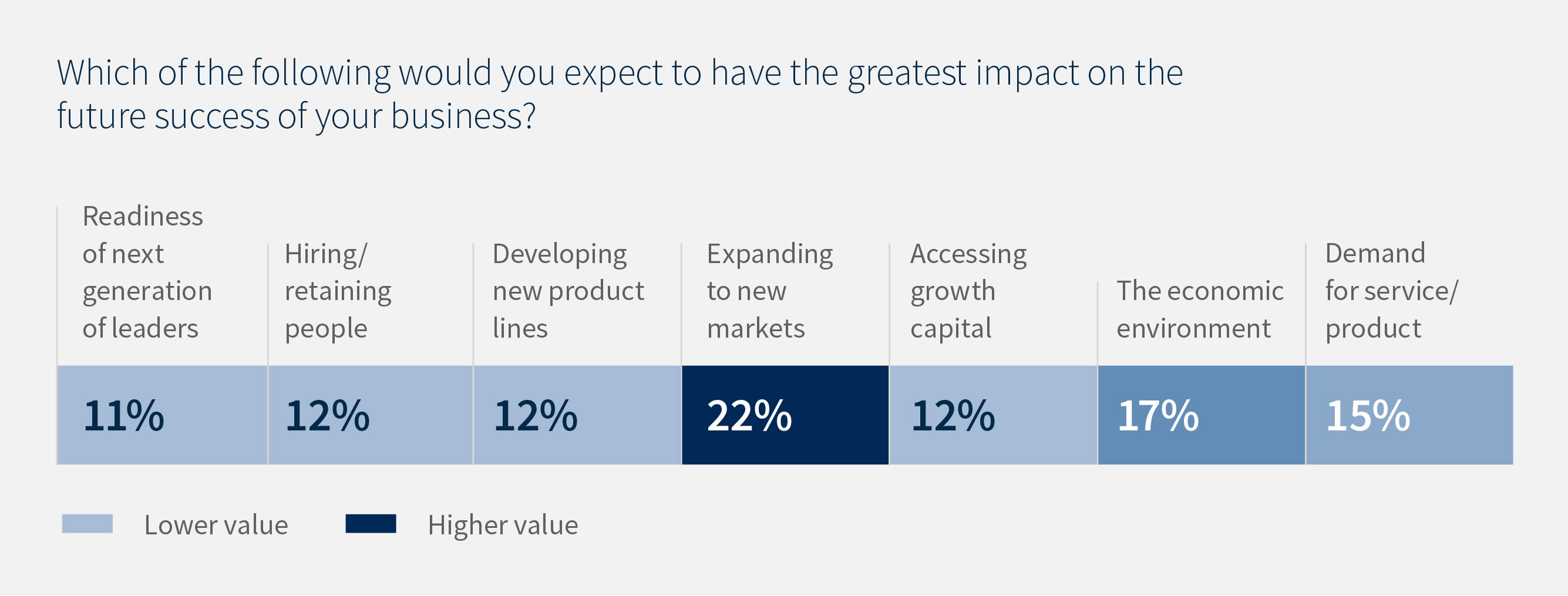2025 Business Owner Report: How business owners are planning their futures
- Business Ownership
- Article
Business ownership creates distinct opportunities and challenges for personal wealth. In a recent survey, Raymond James asked business owners how they are managing them.
Private business owners are different from other investors.
For one, they’re directly responsible for the success of their biggest investment. Less obvious, they tend to carry greater personal financial risk, have less information about the value of their assets and have to go through a deliberate process to convert the value of their investment into realized personal wealth.
It’s a combination of factors that can make planning for the future complicated.
“For the owner and their business, their exit has incredible stakes. Managing that moment well can be a lifelong benefit, the result of executing plans months – even years – ahead of a business transition. Professional guidance can help keep it on track.”
– Bonnie Harper, Vice President, Raymond James Private Wealth Consulting
The Raymond James 2025 Business Owner Report, the product of a survey* of more than 500 owners of privately held businesses, offers insight into the interplay of business achievement and private wealth for this community of dynamic investors. It also helps business owners gauge their decisions against those of their peers.
2025 key findings
- Asset concentration
Business owners surveyed tend to have high levels of asset concentration, with unrealized business value being a major component of their personal wealth.
- Transition timeline
More than half of respondents (56%) plan to exit their financial stake in their current business, in part or in whole, within the next five years. An overwhelming majority (88%) plan to do so within the next 10 years.
- Growth capital
Most business owners (85%) expect they will need a capital infusion to power their next stage of growth. There is less consensus on the best source, from private equity to personal loans.
- Future plans
Nearly two-thirds of business owners (63%) intend to keep working at their business or invest in a new venture after exiting their financial stake in part or in whole.
- Future business success
More than one-fifth (22%) of respondents said expansion into new markets was a critical factor for their business’s success.
* Methodology: This poll was conducted between April 7-18, 2025, among a national sample of 540 business owners.^ Interviews were conducted online and the data were weighted to approximate a target sample of adults based on gender, educational attainment, age, race and region. Results from the full survey have a margin of error of +/- 4 percentage points.
^ Business owners are classified as those who are 18+ in the United States, who work in the private sector or are self-employed and have an ownership stake of 5+ years at a privately held company with 6-1,000 employees.
Asset concentration
Business owners’ wealth is often closely tied to a single asset – their business. Of survey respondents, 44% said their business represented more than half their wealth. Nine in 10 surveyed said it was more than a quarter of their wealth.
Though baby boomers represent just 6% of respondents, 31% of baby boomers indicated more than three quarters of their personal wealth was tied to their business, a rate nearly three times higher than found in the Gen X and millennial cohorts.
Data insight: Asset concentration can be a strategic decision – particularly during the startup phase and other periods of strong business reinvestment – but it elevates investors’ exposure to risk. Concentration can also be the result of generating strong business growth without a clear plan for turning it into diversified personal wealth.
Planning questions:
- Are you taking enough income from your business?
- Do you have a plan for translating business value into personal wealth?
- Are you being deliberative about your risk levels? Or is it time to de-risk and diversify?
Another Great Wealth Transfer
In the decades to come, baby boomers, the most affluent generation in American history, is expected to transfer approximately $88 trillion to their children and the broader economy. Amid that seismic shift, another wealth transfer is also underway.
More than half of survey respondents (56%) plan to exit their financial stake in their current business, in part or in whole, within the next five years. Within the next 10 years, the number increases to an overwhelming majority of respondents (88%). Life’s unexpected turns, such as illness, divorce or death, could increase those numbers or accelerate timelines.
It’s the Gen X/Millennial economy
Most business owners – 92% -are Gen X or millennials, those born between 1965 and 1996. Baby boomers make up 6% of business owners while Gen Z, the eldest of whom were born in 1997, make up just 2%.
Future plans
A majority see business ownership as a step, not a final goal. Only one-fifth of those surveyed saw retirement as their next step after exiting their ownership stake, in part or in whole. Nearly two-thirds in total intend to keep working at the business or to pursue a new business venture.
Data insight: In the past decade, technology has extended the management capacity of private equity companies. In turn, this has provided owners of well-run local businesses unprecedented access to Wall Street capital and selling opportunities. Concurrently, Silicon Valley startup culture helped make the idea of serial entrepreneurship mainstream. It’s changed the local business environment.
Planning questions:
- What’s your timeline?
- What are you doing today to support your transition plan?
- How much insight do you have into the present market value of your business?
Succession
Business owners are attuned to the importance of succession and exit planning. Among survey respondents, 85% have a transition plan. Among those who do not, about a third cited uncertainty about the future of the business, the most common response, as the most significant barrier to setting a plan.
More than a third of business owners saw family succession as part of their transition plan, the most prevalent transition type. The response rate jumped to 44% for owners who valued their businesses at $15 million or more, indicating the most valuable businesses are family ventures.
Transitions to internal stakeholders represented 23% of responses, the same percentage who expected to sell to an external third party. Another 18% indicated the business would not change hands; the owner would stay as long as it was operational.
Data insight: Each transition type has its specific challenges, from the emotional to the operational. Each has risks that should be managed, and as early as possible.
In family transitions, clear communication is key. Internal stakeholders will want to see growth plans – and perhaps guarantees – to stay engaged. External suiters will conduct thorough due diligence, and deal structure can be crucial for mitigating taxes and balancing the goals of the seller and the buyer.
Planning questions:
- What expectations do you have for your successor?
- Are you willing to stay on board to ease the transition?
- Are you open to negotiation to serve your other goals?
- If you plan to close the business when you retire, how are you managing income and business reinvestment?
Growth capital
About seven in eight respondents expected to need outside capital to fuel a business expansion. Asked to identify all avenues through which their business would access growth capital, respondents put private equity (52%) at the top of the list, slightly ahead of traditional/bank loan (50%), personal funds (43%), securities based line of credit (43%) and personal loan (40%).
Data insight: Each source of funding has its benefits and drawbacks. When you seek private equity, you may share some degree of control. If you use your personal wealth to fund a growth strategy, you elevate your personal risk, so it’s a good idea to weigh your options.
Planning questions:
- Have you explored opportunities for bringing in outside investors?
- What are the ramifications of taking on personal debt to support your business?
- How will you manage interest-rate risk?
The future of the business
Owners weigh multiple factors that will influence the future success of their businesses. Expanding to new markets was identified as the most critical factor, garnering 22% of responses, though responses were evenly spread among several other potential challenges: economic environment (17%), demand for service/product (15%), hiring/retaining workers (12%), developing new product lines (12%), accessing growth capital (12%) and readiness of next generation of leaders (11%).
Managing the moment
The future of a private business and the intergenerational wealth it represents go hand in hand.
For owners, the intricacies of succession planning, income and estate tax mitigation, estate planning, risk mitigation, investment objectives and liquidity planning – including sources of short-term personal cash flow – are important considerations throughout the lifecycle of a business but especially in the 18 to 24 months just before and after a financial transition.


